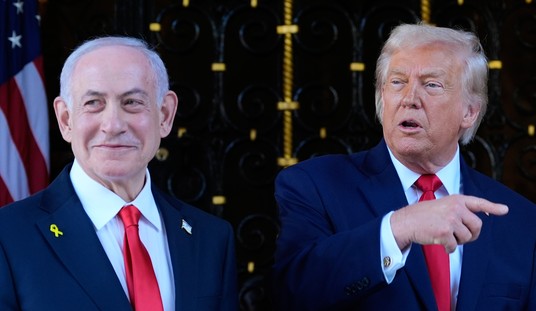The Republican National Convention finished up on Thursday, and the Democratic National Convention begins on Tuesday. The biggest TV draw of the coming week, however, may be the Giants-Cowboys NFL season opener on Wednesday night, if the TV ratings for the GOP convention are any indication (down about 30% from 2008).
The big question coming out of the GOP convention was whether the Romney-Ryan ticket would receive a boost from the event (a “bounce” to use the currently accepted political metaphor). The answer to this question is probably yes, though it may be short-lived since the Democrats’ convention comes so close on its heels and the Democrats’ three-day meeting can be expected to help the Obama-Biden ticket in the initial polls taken after it is completed.
Nate Silver, the New York Times statistics guru, has been arguing for months that the polls this year have been remarkably stable, with the president holding onto a 1-2 point lead nationally and a similarly small lead in many of the battleground states. His model anticipates that a presidential candidate can expect a bounce from a convention based on past polling history, and his “bogie” for such a boost is 4% this year. Silver believes Romney has fallen short of that, with a 2-3 point bounce, and as a result, his model penalizes Romney for this “underperformance.”
Given the stability of the race over many months, a 4-point bounce might be a bit high as an expectation this year. In any case, Silver now gives Obama a better than 3% lead in his adjusted model and nearly a 75% likelihood of victory in November, whereas the RealClearPolitics. com average of all Obama vs. Romney national polls is dead even at the moment. Three weeks ago, before the Paul Ryan selection, Obama led the RCP poll average by 4.6%. This followed a collection of polls all released in the same week by Reuters, CNN, Fox, and IBD that had Obama ahead by at least 7%. In the last three weeks, only one poll has shown Obama ahead by over 2%, and in that survey, an NBC/Wall street Journal poll, the lead was 4%. Bounce or no bounce following the GOP convention and the Ryan selection, the race has tightened in the last three weeks.
Nate Silver has a complex model, requiring many input assumptions and weightings. It is not at all clear that Silver’s complex model produced any better results than the far more pedestrian RCP averages in the elections of 2008 and 2012. In 2010, Silver underestimated the GOP House wave for most of the year and expressed some skepticism over the chances of the GOP winning enough seats (38) to regain control of that body even in the weeks right before the election. The GOP netted 63 House seats in 2010.
Has the Romney-Ryan bounce been 2-3 points so far? That, too, is not at all clear. In the Rasmussen tracking poll, which is a three-day rolling average, Obama led by 2 or 3 points in the days before the convention. Now Romney leads by 4, suggesting a 6-7 point shift. Rasmussen is also tracking the battleground states. In these 11 states, Obama held a 4-point lead before the GOP convention, and Romney now leads by 2, again a 6-point shift. Silver believes the Rasmussen surveys have a small bias towards GOP candidates this cycle, but less than in 2010. In any case, if the surveys are 2 points too favorable to GOP candidates this cycle, that bias should show up in both the pre-convention and post-convention surveys.
The other major tracking poll, Gallup, has shown no bounce at all for Romney. Gallup had the race even before the convention and now has Obama up 1. The Gallup survey is a 7-day rolling average, so its results tend to move less abruptly than those in the Rasmussen survey. It is possible Romney may still get a small boost. In any case, the two tracking surveys have diverged on the impact of the convention. A third tracking poll by Reuters/Ipsos, begun before the convention, has moved from a 4-point Obama lead to an even race — a 4-point swing towards Romney, which is a result in the middle of the Rasmussen and Gallup results.
There have been very few polls in the swing states the last week, though those that have appeared recently have generally been more favorable to Romney than to Obama. PPP, a Democratic polling firm that has had a slight lean towards Democratic candidates this cycle, has Obama up 1 in Florida and even with Romney in North Carolina. However, a poll by Elon University and the Charlotte Observer released on Sunday has Romney up 4 in North Carolina. Last week, an EPIC poll in Michigan had Obama up 3 (he won the state by 16% in 2008), and PPP polls had Obama up 3 in Nevada (a state he won by 12% in 2008) and up 2 in Iowa (a state he won by 10% in 2008). Both states are margin-of-error states at the moment, and practically even. Michigan is a state that Nate Silver has argued is not a tossup state this cycle, but there are now several recent polls by instate pollsters that seem to suggest otherwise. The amount of time the president is spending in Iowa (4 days the last two weeks), a state with only 6 Electoral College votes, suggests that the Hawkeye State is very much in play.
Assuming Romney wins Missouri, North Carolina, and Indiana — three states where he now has the lead — his Electoral College total would be 206. If Romney can win Ohio, Virginia, and Florida, he would be at 266. Iowa then puts him over the top. If Michigan is in play, as it seems to be, then Romney has a shot at 317 Electoral College votes, all the Bush states from 2004 except New Mexico, plus New Hampshire, Wisconsin, and Michigan.
In the RCP averages, Obama now holds the following leads in the tossup states: Ohio 1.4%, Virginia 0.6%, Nevada 3.3%, Wisconsin 1.4%, Michigan 1.2%, New Hampshire 3.5%, Florida 1.0%, Iowa 0.2%, and Colorado 1.6%. The states in which Romney leads plus those in which he trails by less than 2% total 307 Electoral College votes. Exclude Michigan, and the total is 291. Many of the battleground states have had no polls taken since the GOP convention, and Romney’s numbers may improve from levels in those averages.
Of course, there will likely be a bounce-back for Obama this week in Charlotte. Given voters’ much greater familiarity with Obama than Romney, it is possible, however, that viewership will be down even more for the Democratic convention this year than for the GOP convention and the positive buzz for the president will be diminished, despite the best efforts of Obama’s many media worshipers. This race has been close for months, and there is no evidence yet of a breakout by either candidate. The debates may offer the last chance for that.









Join the conversation as a VIP Member